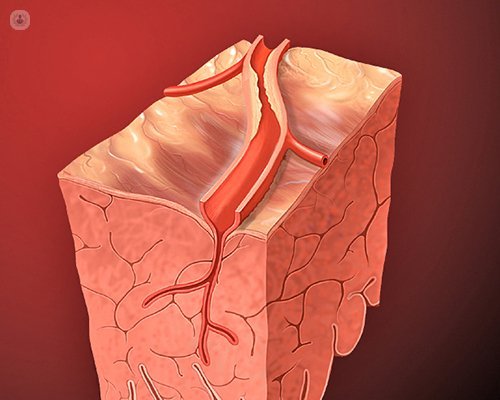Acute ischemia: how to detect and treat
Written by:
Acute ischemia and frequent causes
Acute ischemia is sudden and abrupt interruption of arterial blood supply to an organ or limb. It may be due to different reasons, but the most common causes of acute ischemia are:
- Arterial embolism: a blood clot that usually comes from the heart, due to valve disease or arrhythmia is formed, depending on the size of it is located in a branch of the arterial tree.
- Arterial Thrombosis: the formation of a thrombus in areas previously diseased arteries by arterioescleroso process or chronic ischemia among other causes.
- Arterial trauma: is a section or lesion of the artery by direct trauma, either by the action of a bone fracture if, by a firearm, knife, etc ...

Warning symptoms of acute ischemia
The cessation of blood flow will cause the following symptoms, presented in order of appearance:
- Coldness
- Pallor
- Intense pain
- Paresthesias or tingling
- Subcianosis or obtaining blue tone in the area
- Paralysis
- Anesthesia
It is very important to act quickly to a case of acute ischemia: at the onset of symptoms should immediately resorted to a vascular surgeon for a diagnosis of the disease and proceed to their best treatment.
How to diagnose acute ischemia
The diagnosis of acute ischemia is based primarily on a physical examination finding of coldness, temperature asymmetries, lack of pulse or paleness.
The non - invasive diagnosis of ischemia occurs with the performance of a doppler, to assess the status and blood flow of the artery.
Angio-CT or an MRI Angio can also be performed, since these diagnostic tests with a comprehensive analysis of the entire arterial tree that can then plan a possible treatment is obtained.
Appropriate treatment for acute ischemia
In cases of stroke and trauma treatment of arterial vascular surgery be required, using techniques embolectomy probe-Fogarty catheter, method involves an incision in the artery to remove the plunger.
In cases of arterial trauma, usually it will require repair by direct suture or bypass, saving the injured area.
In cases of suspected arterial thrombosis, when the patient has a history of claudication the march, many vascular risk factors such as smoking, hypertension or diabetes, the most prudent will, after an indicative non - invasive examination by Ecodoppler perform arteriography armed intention to treat and artery catheterization. Thus, by endovascular techniques such as guidewires, balloons or stents, you can solve ischemia.
In those cases not feasible to do by minimally invasive endovascular techniques, you can always turn to the derivative classical bypass surgery using autologous prosthesis type, ie own vein, or heterologous or synthetic prosthesis.


